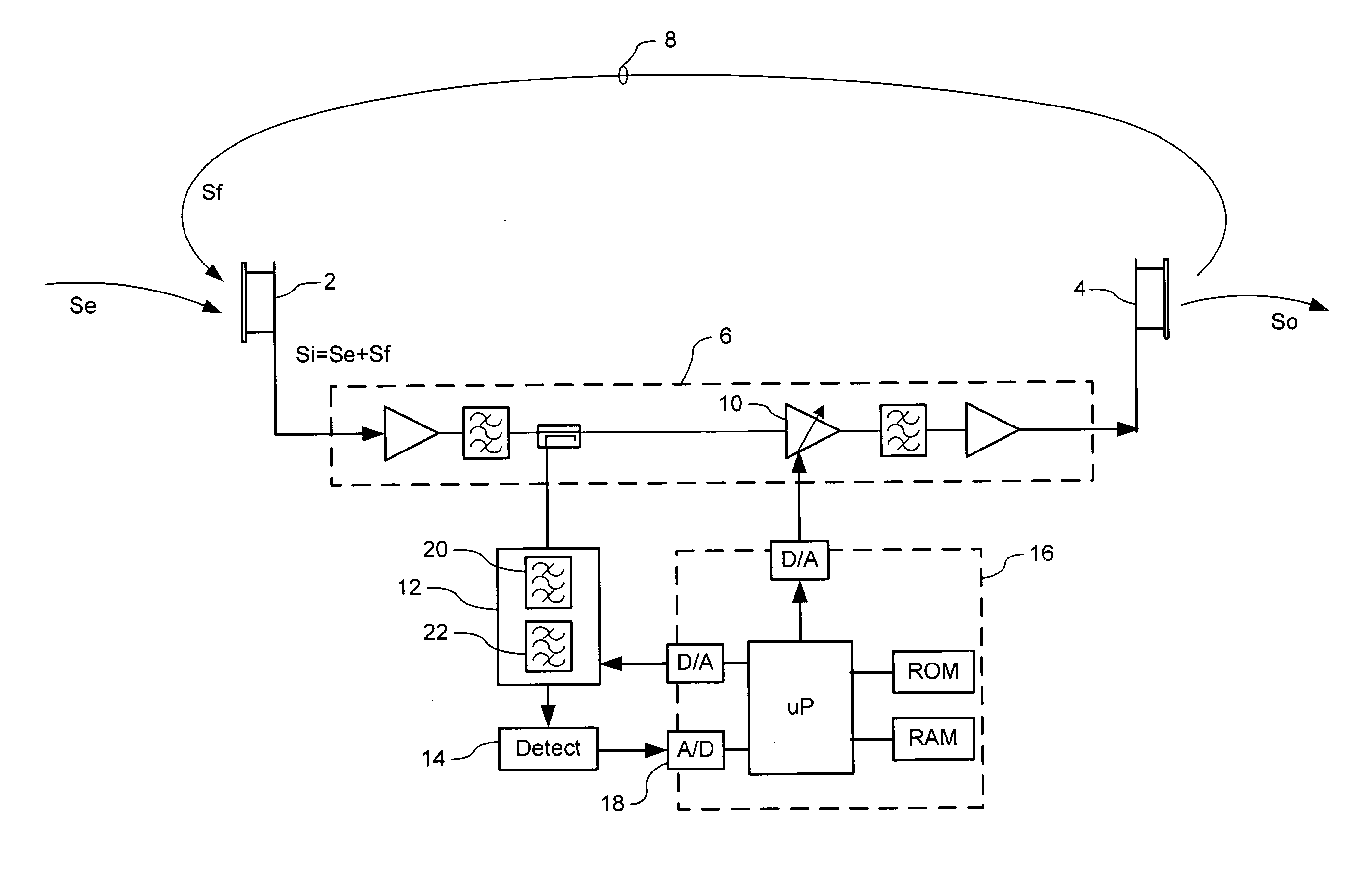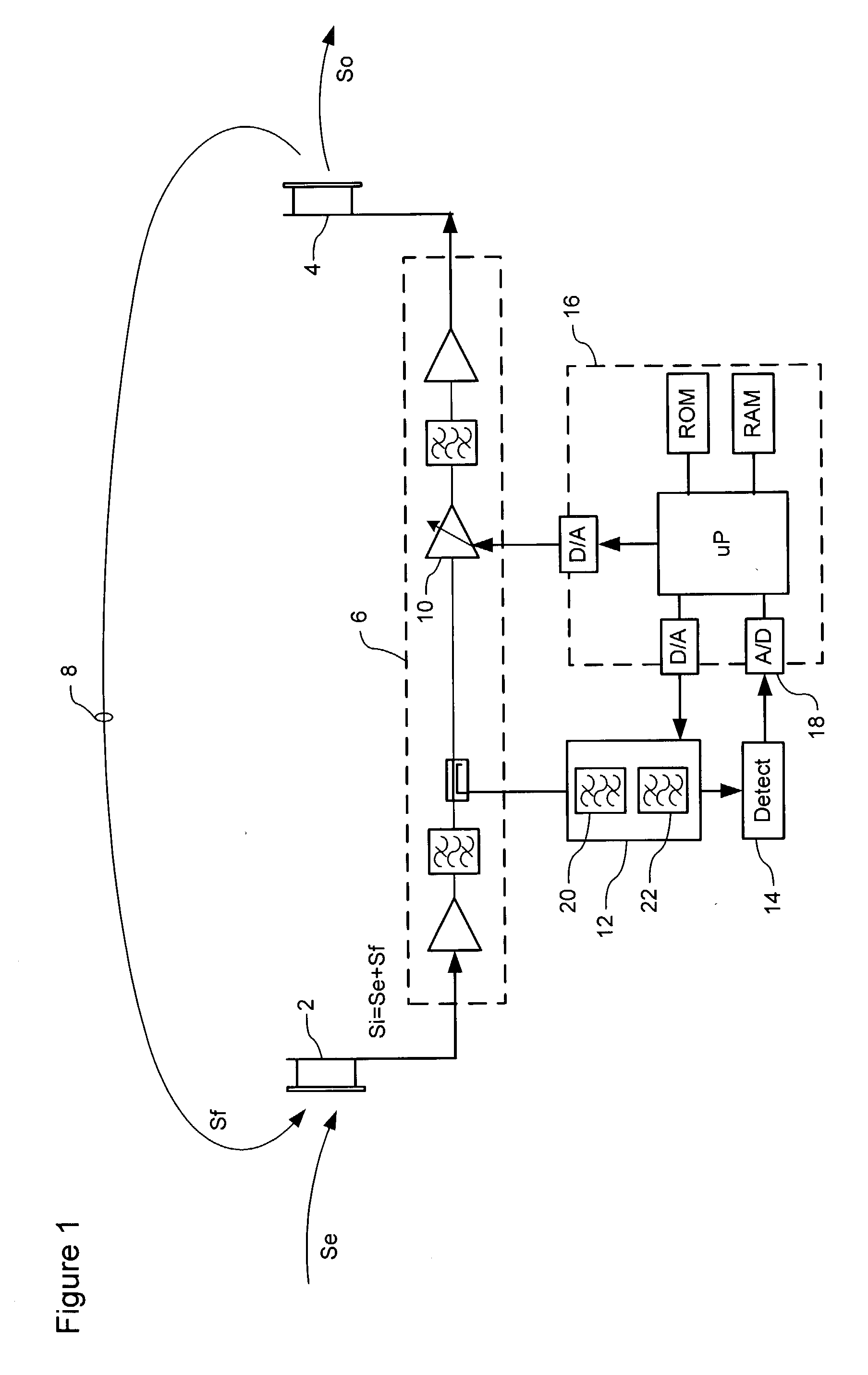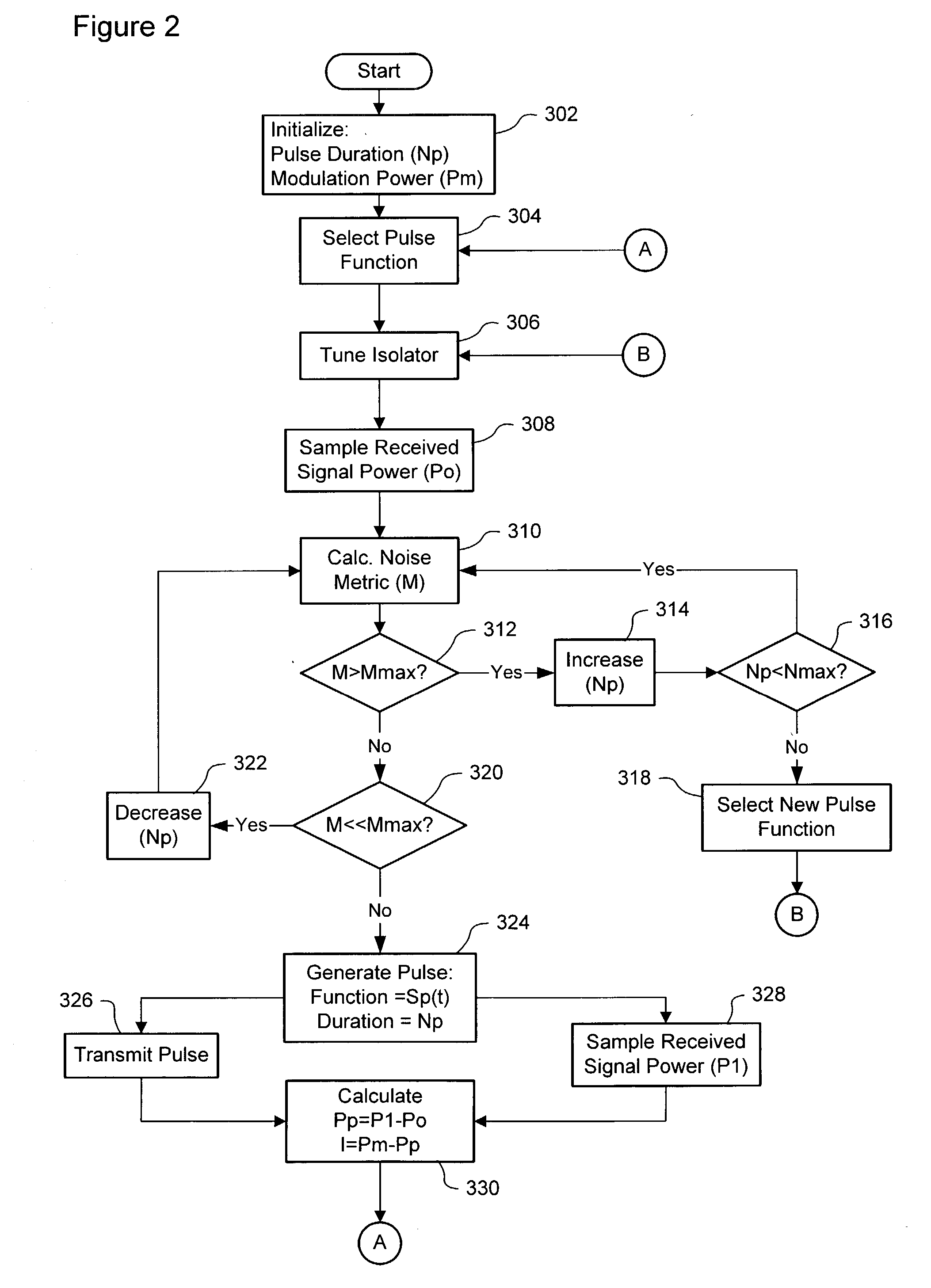Monitoring stability of an on-frequency repeater
a technology of on-frequency repeaters and stability monitoring, which is applied in the field of monitoring stability of on-frequency repeaters, can solve the problems of serious degrading of the quality of desired rf signals, part of this delay is inherent, and achieve the effect of monitoring stability and estimating the stability of the repeater
- Summary
- Abstract
- Description
- Claims
- Application Information
AI Technical Summary
Benefits of technology
Problems solved by technology
Method used
Image
Examples
Embodiment Construction
[0032] The present invention provides a method and system for monitoring stability of an on-frequency repeater. FIG. 1 is a block illustrating principle elements of an exemplary system in accordance with an embodiment of the present invention.
[0033] As shown in FIG. 1, an on-frequency repeater includes an input 2 for receiving an input signal (Si); an output 4 for radiating an output signal (So); and a signal path 6 coupled between the input 2 and output 4 in order to amplify the received input signal (Si) for retransmission as the output signal (So). If desired, the signal path 6 may include an Intermediate Frequency (IF) section (not shown) to facilitate filtering, amplification, and other signal processing functions.
[0034] FIG. 1 shows a single RF signal path 6 coupled between the input 2 and output 4, both of which are provided by respective antennas. This arrangement will clearly be suitable for unidirectional RF signal traffic. Bi-directional signal traffic through the repeate...
PUM
 Login to View More
Login to View More Abstract
Description
Claims
Application Information
 Login to View More
Login to View More - R&D
- Intellectual Property
- Life Sciences
- Materials
- Tech Scout
- Unparalleled Data Quality
- Higher Quality Content
- 60% Fewer Hallucinations
Browse by: Latest US Patents, China's latest patents, Technical Efficacy Thesaurus, Application Domain, Technology Topic, Popular Technical Reports.
© 2025 PatSnap. All rights reserved.Legal|Privacy policy|Modern Slavery Act Transparency Statement|Sitemap|About US| Contact US: help@patsnap.com



